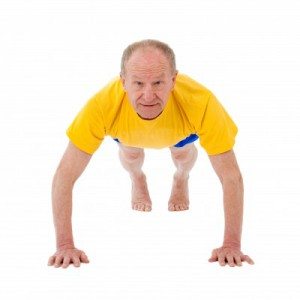New Guidelines for Physical Activity

The Department of Health has released a new set of guidelines for physical activity at each stage of life. These guidelines are based on a range of global evidence and research that confirms the greater risk of diseases like diabetes, cancer, CHD and obesity when sedentary. The report titled ‘Start Active, Stay Active’ takes into account for the first time the importance of physical activity at all ages, and specific guidelines have been developed for each age group.
The guidelines also allow more flexibility for achieving the stated levels of physical activity, which is a key difference between these and the former guidelines. Additionally, there is:
- a stronger recognition of vigorous intensity exercise
- greater flexibility to participate in moderate and vigorous activities
- more emphasis on daily activity
- new guidelines for sedentary behaviour
Individuals should aim to achieve the recommended levels of activity outlined in the ‘Start Active, Stay Active’ paper. Parents and carers should also be mindful of these when responsible for children and older or vulnerable adults respectively. The guidelines include:
EARLY YEARS (under 5s)
- Physical activity is encouraged from birth, particularly through safe floor-based play and water activities
- Pre-school children that are able to walk unaided should be physically active each day for at least 180 minutes (3 hours), and spread evenly throughout the day
- Children under 5 should keep to a minimum the time spent being sedentary (being restrained or sitting), especially for extended periods of time (except time spent sleeping)
CHILDREN AND YOUNG PEOPLE (5-18 years)
- All children and young people should engage in moderate to vigorous intensity physical activity for at least 60 minutes and for several hours each day
- Vigorous intensity activities or exercises, particularly those that strengthen muscle and bone tissues, should be performed at least three days a week
- All children and young people should minimise the amount of time spent being sedentary (sitting) for extended periods
ADULTS (19-64 years)
- Adults should aim to be active daily. Over any given week, physical activity should total at least 150 minutes (2.5 hours). This activity should be moderate intensity and performed in bouts of 10 minutes or more. A recommended approach is to perform 30 minutes of physical activity on at least 5 days a week
- Alternatively, comparable benefits can be achieved through 75 minutes of vigorous intensity activity, distributed throughout the week or a combination of moderate and vigorous intensity activity
- Adults should also undertake physical activity to improve muscle strength on at least two days each week
- All adults should minimise the amount of time spent being sedentary (sitting) for extended periods
OLDER ADULTS (65+ years)
- Older adults who participate in any amount of physical activity gain some health benefits, including the maintenance of good physical and cognitive function. Some physical activity is better than none, and more physical activity provides greater health benefits.
- Older adults should aim to be active daily. Over a week, activity should add up to at least 150 minutes (2½ hours) of moderate intensity activity in bouts of 10 minutes or more – one way to approach this is to do 30 minutes on at least 5 days a week.
- For those who are already regularly active at moderate intensity, comparable benefits can be achieved through 75 minutes of vigorous intensity activity spread across the week or a combination of moderate and vigorous activity.
- Older adults should also undertake physical activity to improve muscle strength on at least two days a week.
- Older adults at risk of falls should incorporate physical activity to improve balance and co-ordination on at least two days a week.
- All older adults should minimise the amount of time spent being sedentary (sitting) for extended periods.

